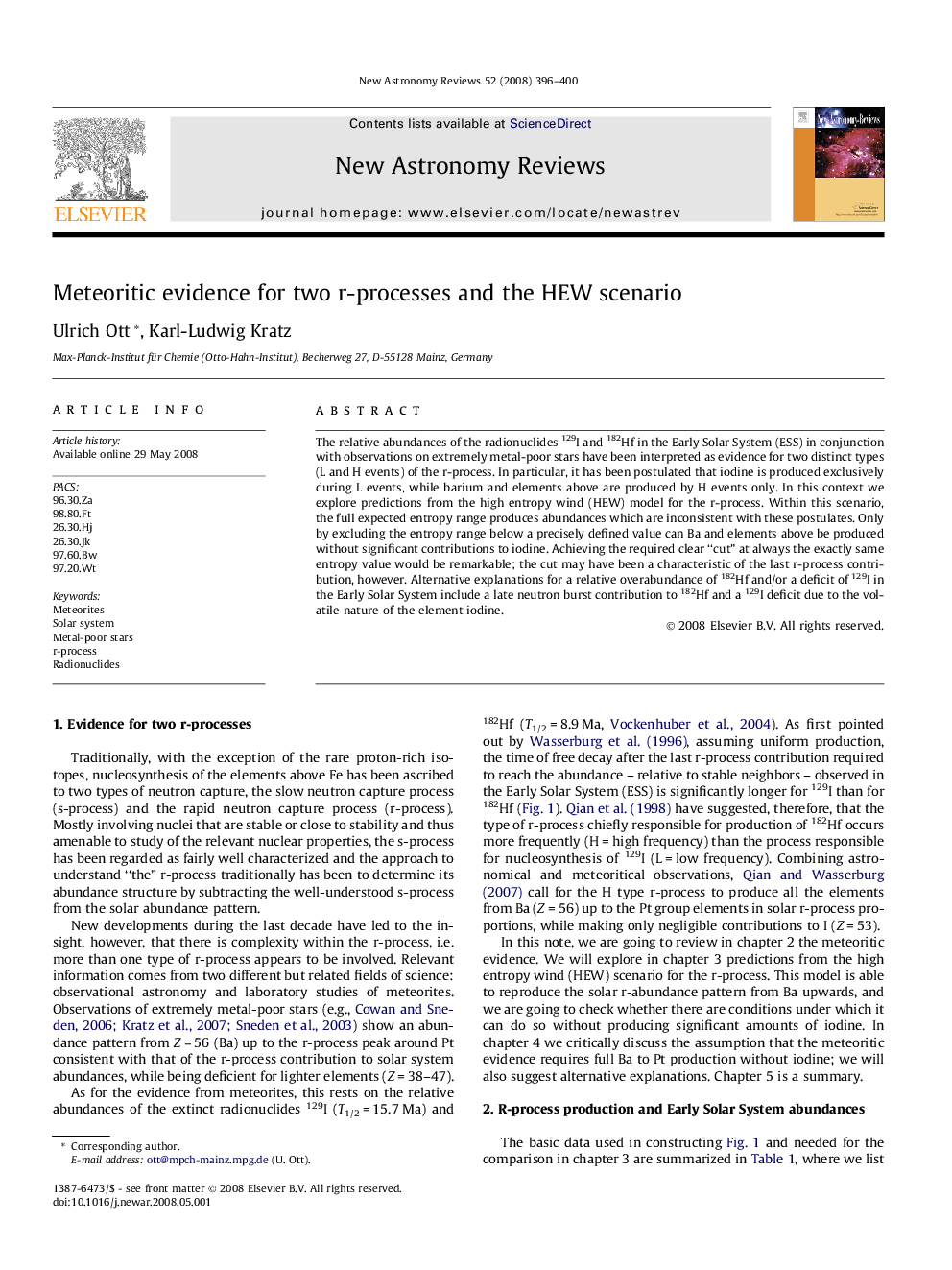| Article ID | Journal | Published Year | Pages | File Type |
|---|---|---|---|---|
| 1780118 | New Astronomy Reviews | 2008 | 5 Pages |
Abstract
The relative abundances of the radionuclides 129I and 182Hf in the Early Solar System (ESS) in conjunction with observations on extremely metal-poor stars have been interpreted as evidence for two distinct types (L and H events) of the r-process. In particular, it has been postulated that iodine is produced exclusively during L events, while barium and elements above are produced by H events only. In this context we explore predictions from the high entropy wind (HEW) model for the r-process. Within this scenario, the full expected entropy range produces abundances which are inconsistent with these postulates. Only by excluding the entropy range below a precisely defined value can Ba and elements above be produced without significant contributions to iodine. Achieving the required clear “cut” at always the exactly same entropy value would be remarkable; the cut may have been a characteristic of the last r-process contribution, however. Alternative explanations for a relative overabundance of 182Hf and/or a deficit of 129I in the Early Solar System include a late neutron burst contribution to 182Hf and a 129I deficit due to the volatile nature of the element iodine.
Related Topics
Physical Sciences and Engineering
Physics and Astronomy
Astronomy and Astrophysics
Authors
Ulrich Ott, Karl-Ludwig Kratz,
